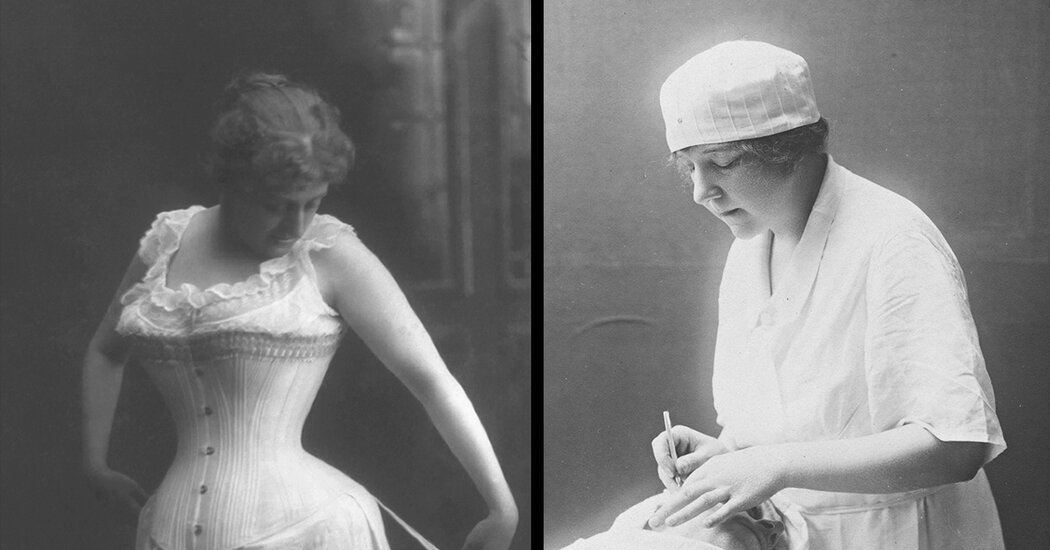
In “All the Rage,” the social historian Virginia Nicholson discusses the changing standards that bedeviled and enthralled a century of women.
Paraffin nose jobs. Blinding mascara. “Bicycle face” (think the “Ozempic face” of 1910). As chronicled in Virginia Nicholson‘s “All the Rage: Stories From the Frontline of Beauty,” there’s not much women haven’t done to conform with the aesthetic standards of their day.
Nicholson, the author of six previous books on subjects ranging from Bloomsbury bohemia to 1950s femininity, introduces each chapter of her rollicking history — which focuses on the century between 1860 and 1960 — with a photograph of a woman whose looks epitomize the ideal of her age. Figure-eight corsets and protuberant bustles give way to short skirts and fringe; bobs cede to lacquered beehives. But as much as fashion, hairstyles and body ideals change over time, some things are forever: You’ll be judged for looking like you try, you’ll be judged if you look like you don’t try and you’re never allowed to get old.
Nicholson talked with The New York Times from her native England about bikini pinups, female empowerment and botched 1920s plastic surgeries. The conversation has been edited for length and clarity.
Why did you choose to focus on these particular years?
I wanted to begin in 1860 because it’s the height of the Victorian era. The corset is shaping the body in an extraordinary, outrageous way, but we don’t know what’s underneath. It’s also the moment when photography goes mainstream. Daguerreotypes are no longer for the rich.
And by 1960, we’ve achieved a high point of visual media. Essentially, we’re still looking at each other in two dimensions, in color, just as we were then.
In 1960, fashion also gets the nearest we ever have to being naked. As you take off those horribly uncomfortable corsets and run around liberated in a bikini, you may think: Thumbs up to liberation. But of course, the more clothes you take off, the more you have to worry about what your body looks like.
We are having trouble retrieving the article content.
Please enable JavaScript in your browser settings.
Thank you for your patience while we verify access. If you are in Reader mode please exit and log into your Times account, or subscribe for all of The Times.
Thank you for your patience while we verify access.
Already a subscriber? Log in.
Want all of The Times? Subscribe.
